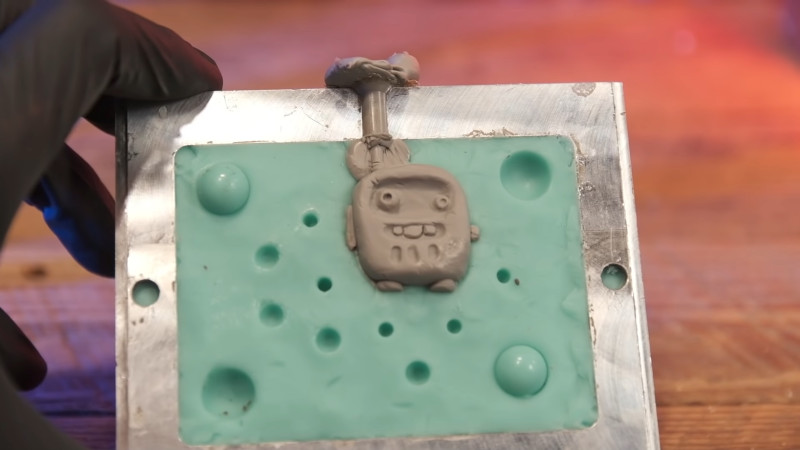When we think injection molding, the first thing that comes to mind is highly automated production lines pumping out thousands of parts an hour. However, the very same techniques are able to be scaled down to a level accessible by the DIYer, as [The CrafsMan] demonstrates.
Using a compact, hand-actuated injection moulder, [The Crafsman] demonstrates the basic techniques behind small-scale injection molding. The PIM-Shooter Model 150A in question is designed to work with low melting point plastics like polypropylene and low density polyethylene, and can use aluminium molds which are much cheaper to make than the typical steel molds used in industry.
However, the real game changer is when [The Crafsman] busts out his silicone mold making techniques, and applies them to injection molding. By making molds out of silicone, they can be created far more cheaply and easily without the requirement of heavy CNC machinery to produce the required geometry. With the right attention to detail, it’s possible to get good results without having to invest in a custom aluminium mold at all.
Injection molding is a process that can achieve things 3D printing and other techniques simply can’t; it can even be used to produce viable lenses. Video after the break.















I absolutely love and support The Crafsman. My favorite youtube personality.
Hands up who else skimmed the title quickly and thought someone was injecting Brian Benchoff?
Come for the projects, stay for the velvet voice
I have a PIM-Shooeter, and I’ve recently been insert molding electronics with it. I found that I can print a mold in ABS and then coat it with a Naphtha/Petroleum Jelly mixture for mold release. The mold release idea was something I had seen on here from Eric Strebel.
After the mold release dries a bit, I can drop my electronics in the mold and shoot plastic over it. It’s working pretty well, actually, and it’s a bit quicker to iterate direct printed molds than it would be to 3D print a positive and then cast a mold out of silicone or epoxy resin.
What is a naphtha-jelly mixture?
Could you elaborate a bit more?
http://www.maqinjet.com
There’s no real standard for what naphtha is. It’s a byproduct of petroleum distillation, often used as a thinner for thicker crude oil to make it easier to pump through pipelines. It can be used for thinning oil based paints so it’s typically found at places that sell oil based house paints.
Petroleum jelly is Vaseline and other brands of the same stuff.
Dissolve Vaseline into naptha until the solution is saturated, where no more will dissolve. It’s a cheap but messy mold release for stuff that won’t react with or have its chemical curing inhibited by petroleum products.
When I was doing plaster molds for ceramics that’s what I used for a release to keep the mold plaster from sticking to the master model and to other parts of a mold.
What Gregg said below. Naphtha is a solvent in the paint aisle at the hardware store, and Vaseline (petroleum jelly) will dissolve into it. I have also heard that petroleum jelly will dissolve into mineral spirits, but it did NOT dissolve in isopropanol or acetone when I tried.
I paint the mixture onto my molds with a brush and wait for the Naphtha to evaporate. The surface is then glossy with petroleum jelly. You could just paint petroleum jelly on a mold, but it tends to go on too thick, which can affect molding quality and is just generally messy.